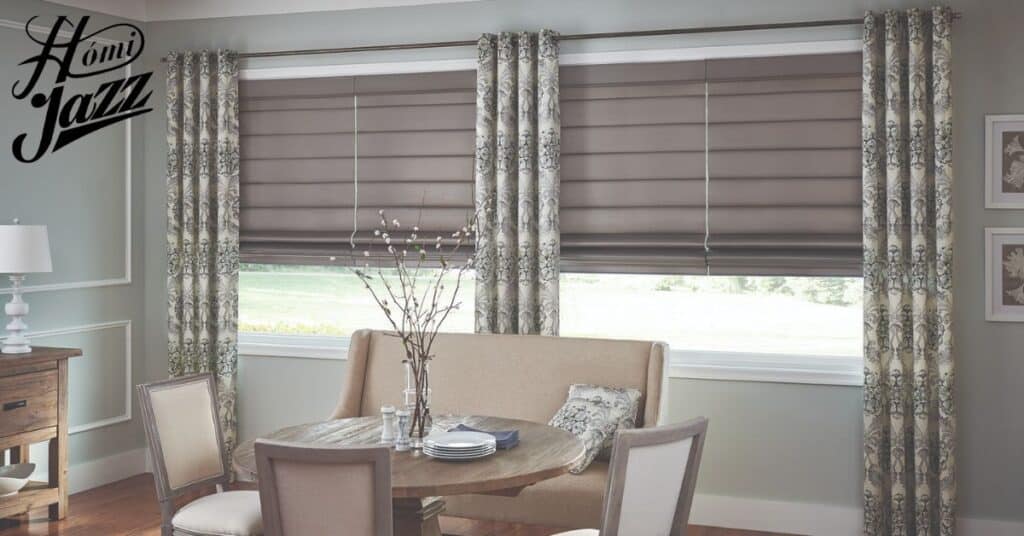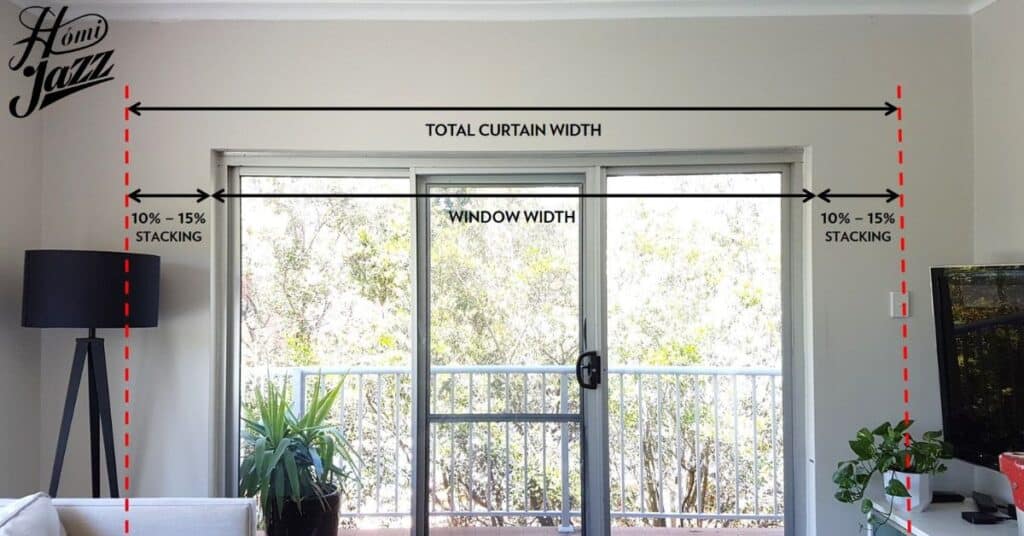A valance is a decorative fabric treatment that covers the upper part of a window, adding flair and elegance to any room. Its primary purpose in interior design is to soften the harsh lines of the window frame while enhancing the overall aesthetic appeal. Valances come in various styles, from simple to elaborate, making them versatile additions to any decor scheme.
Proper sizing of a valance is crucial for achieving a well-balanced look in interior design. When the valance is too narrow, it may appear disproportionate to the window, disrupting the visual harmony of the room. Conversely, if the valance is too wide, it can overwhelm the window and make the space feel cramped. Understanding the ideal width of a valance in relation to the window size is essential for creating a cohesive and visually pleasing design scheme.
Understanding Valances
A valance is a piece of fabric hanging across a window’s top. There are different types like box pleats, swag, and scalloped. Each type has its unique look.Valances can make windows look better. They add style and can hide curtain rods or other hardware. You can use them alone or with curtains or blinds. This makes them very versatile for enhancing window treatments.
Also Read this:https://homijazz.com/are-pleated-curtains-in-style/
Rod Pocket Valances
A rod pocket valance is a type of window treatment. It has a pocket along the top edge where a curtain rod can slide through. This creates a gathered or pleated look when hung. Rod pocket valances are easy to install and give a neat appearance. They come in various fabrics, colors, and patterns to suit different décor styles. These valances are popular for adding a touch of elegance to windows without overwhelming them.
Tab Top Valances
A tab-top valance is another type of window decoration. Instead of a pocket, it has fabric loops or tabs along the top edge. These loops slide onto a curtain rod for hanging. Tab top valances create a casual and relaxed look. They are simple to install and offer a charming, gathered appearance when hung. These valances come in various fabrics and styles to complement different room designs.
Flat Valances

A flat valance is a simple type of window covering. It is a straight piece of fabric hanging across a window’s top. Unlike other valances, it doesn’t have gathers or pleats. Flat valances offer a clean and modern look to windows. They are easy to install and complement traditional and contemporary decor styles. These valances come in various colors and patterns to match different room aesthetics.
Also read this:https://homijazz.com/when-to-use-a-valance-reasons-why-your-home-needs-one/
Valances on Rings
Valances on rings are a type of window treatment. They feature fabric loops or rings along the top edge. These rings slide onto a curtain rod for hanging. Valances on rings create a sleek and modern appearance. They are easy to install and allow for smooth movement along the rod. These valances come in various fabrics and styles to suit different room designs.
M-Shaped Valances
M-shaped valances are a unique type of window decoration. They have a distinctive M-shaped design along the bottom edge. These valances typically feature pleats or gathers for added texture. M-shaped valances create an elegant and sophisticated look for windows. They come in various fabrics and colors to complement different decor styles. These valances add visual interest and character to any room.
Straight Valances
Straight valances are plain fabric pieces hung across windows without gathers or pleats. They offer a clean, minimalistic appearance and suit various interior styles. Available in diverse colors and patterns, they complement room decor effortlessly.
Importance of Proper Sizing
The width of the valance affects how balanced the window treatment looks. When sized correctly, it matches the window’s size, making the room more attractive. Well-sized valances frame the window nicely without being too big or too small.
They help create a harmonious design and improve the room’s atmosphere. However, if the valance is too narrow, the window may look empty, while if it’s too wide, it can overwhelm the window and the room. Getting the size right is important for a pleasing and unified look.
Determining the Ideal Width
To determine the ideal width for your valance, let’s say you have a window that measures 40 inches wide. If you have installed curtain rods, measure the distance between the mount points or finials, which might be around 42 inches. Adding 1-1/2 to 3 inches to this width will give you a range of 43.5 to 45 inches for your valance width.
Now consider the style of the valance. If you prefer a modern look, a straight valance with clean lines would be suitable. So, you might choose a valance that is 44 inches wide for a balanced appearance. By following these steps and considering both the window measurements and the desired style, you can determine the optimal width for your valance. This ensures that it fits well and adds the perfect finishing touch to your window treatment.
Proportion and Balance
Achieving the proportionate balance between the valance and the window is crucial. It ensures a harmonious and visually pleasing appearance. A well-proportioned valance complements the window size without overpowering it.

It creates a sense of balance and symmetry in the room’s design. Disproportionate valances can disrupt the overall aesthetic and make the window treatment look awkward. Therefore, maintaining proportion and balance is essential for achieving an elegant and cohesive look in your space.
Styling Tips:
When working with valances of different widths, consider the overall aesthetic you want to achieve. For a minimalist look, opt for narrow valances that provide subtle accents to the windows. Alternatively, if you desire a more dramatic effect, choose wider valances that make a bold statement and add visual interest. Experiment with various fabrics, patterns, and textures to match the valance width with the room’s decor style.
Pair narrow valances with lightweight curtains or sheer fabrics to maintain an airy and open feel in the room. For wider valances, consider using heavier drapes or layered curtains to create depth and dimension. Additionally, coordinate the valance width with the scale of other furniture and decor elements in the room. Balance is key – ensure that the valance width harmonizes with the proportions of the window and complements the overall scale of the space.
Common Mistakes to Avoid
A common error is choosing valances that are too narrow, resulting in an unbalanced and incomplete window treatment. Conversely, selecting valances that are too wide can overwhelm the window, making the space feel cramped and cluttered.
To avoid these mistakes, measure the window accurately and add a sufficient amount to the width for proper coverage. Consider the room’s decor style and the scale of the window when choosing valance width. If a mistake is made, consider layering curtains or adjusting the valance width to achieve a balanced and polished look.
DIY and Custom Options
DIY valances offer flexibility as they allow individuals to customize the width according to their preferences and window dimensions. With DIY projects, one can choose from a variety of materials and styles to create a personalized look that matches their decor aesthetic. On the other hand, custom-made valances provide precise measurements and professional craftsmanship, ensuring the perfect width for any window size.
These valances are budget-friendly and suitable for individuals with basic sewing skills, but they may lack the precision and durability of professionally made options. Custom-made valances offer tailored solutions and high-quality finishes but may come with a higher price tag and longer lead times. Ultimately, the choice between DIY and custom options depends on skill level, budget, and desired level of customization.
Conclusion
Proper sizing valances concerning window width are crucial for achieving a balanced and visually appealing window treatment. Valances that are too narrow can appear disproportionate, while those that are too wide may overwhelm the window and disrupt the room’s aesthetic. Readers need to consider their specific needs and aesthetic preferences when selecting the width of their valances.
By taking accurate measurements and considering the overall design scheme of the room, individuals can ensure that their valances enhance the windows while complementing the overall decor. Whether opting for DIY projects or custom-made options, prioritizing proper sizing will contribute to a polished and cohesive look in any space.
Frequently Asked Questions
What width should a valance be?
A valance width should typically be 2 ½ times the width of the window.
What is the ratio of the valance to the window?
The ratio of the valance to the window is typically 1.5 times the window width for the valance width and the valance length is often 1/4 of the window height plus one inch.
How far should a valance hang?
A valance should hang 1 to 2 inches below the ceiling line or crown molding ideally halfway between the top of the window and ceiling for higher ceilings.
What is a common valance for blinds?
A common valance for blinds covers each headrail spanning across multiple window blinds for a cohesive look.

Howdy is behind this home blog, sharing personal stories, thoughts, and insights from daily life. I can dedicated to bringing you the latest trends, expert advice, and creative ideas to make your home the sanctuary you’ve always dreamed of. Whether you’re looking for DIY tips, home decor inspiration, home loans, rentals or renovations.







